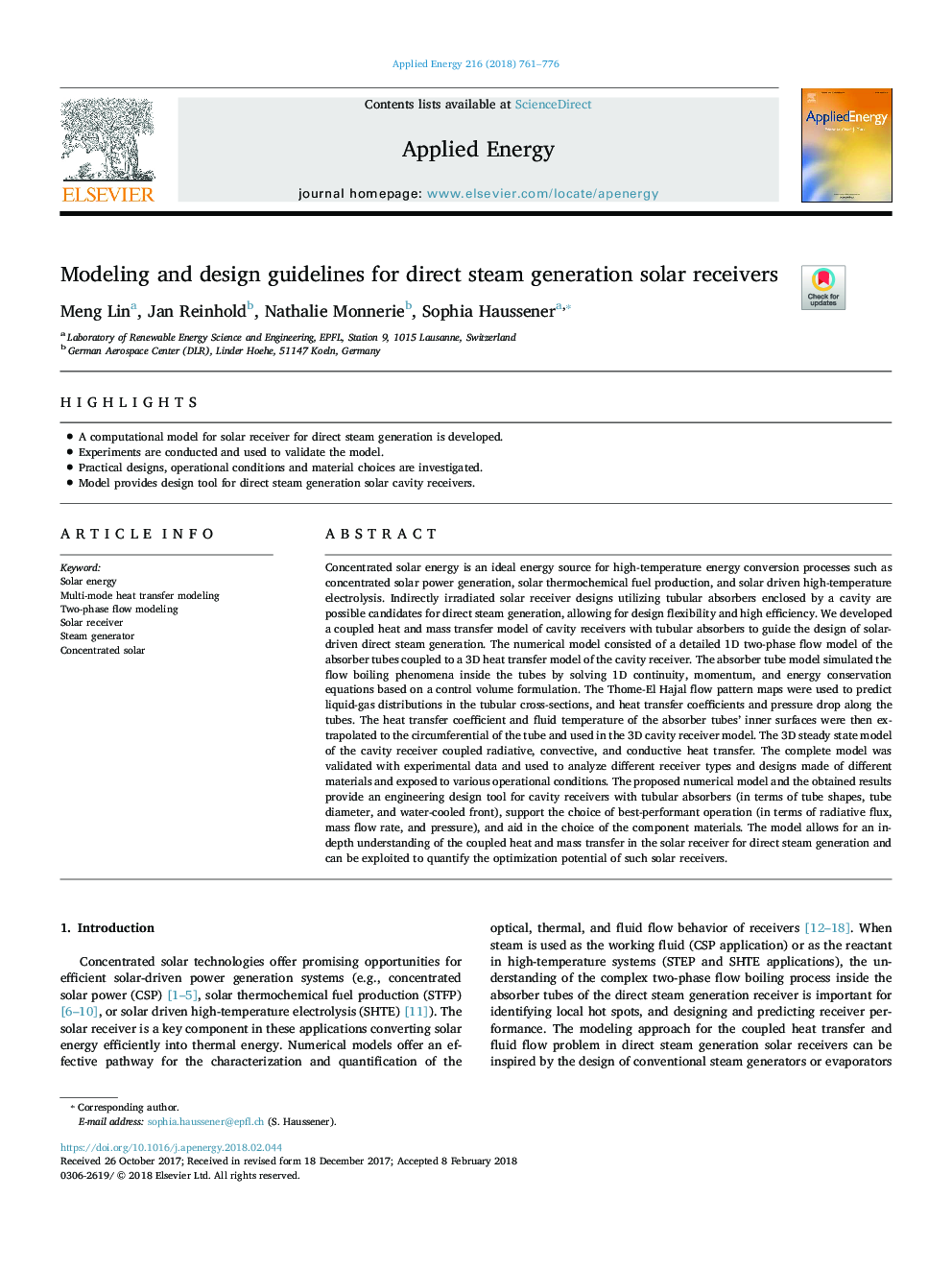| کد مقاله | کد نشریه | سال انتشار | مقاله انگلیسی | نسخه تمام متن |
|---|---|---|---|---|
| 6680653 | 1428074 | 2018 | 16 صفحه PDF | دانلود رایگان |
عنوان انگلیسی مقاله ISI
Modeling and design guidelines for direct steam generation solar receivers
ترجمه فارسی عنوان
دستورالعمل های مدل سازی و طراحی برای گیرنده های خورشیدی تولید بخار مستقیم
دانلود مقاله + سفارش ترجمه
دانلود مقاله ISI انگلیسی
رایگان برای ایرانیان
کلمات کلیدی
انرژی خورشیدی، مدل سازی حرارتی چند حالته مدل سازی دو فاز، گیرنده خورشیدی، ژنراتور بخار، غلظت خورشید،
موضوعات مرتبط
مهندسی و علوم پایه
مهندسی انرژی
مهندسی انرژی و فناوری های برق
چکیده انگلیسی
Concentrated solar energy is an ideal energy source for high-temperature energy conversion processes such as concentrated solar power generation, solar thermochemical fuel production, and solar driven high-temperature electrolysis. Indirectly irradiated solar receiver designs utilizing tubular absorbers enclosed by a cavity are possible candidates for direct steam generation, allowing for design flexibility and high efficiency. We developed a coupled heat and mass transfer model of cavity receivers with tubular absorbers to guide the design of solar-driven direct steam generation. The numerical model consisted of a detailed 1D two-phase flow model of the absorber tubes coupled to a 3D heat transfer model of the cavity receiver. The absorber tube model simulated the flow boiling phenomena inside the tubes by solving 1D continuity, momentum, and energy conservation equations based on a control volume formulation. The Thome-El Hajal flow pattern maps were used to predict liquid-gas distributions in the tubular cross-sections, and heat transfer coefficients and pressure drop along the tubes. The heat transfer coefficient and fluid temperature of the absorber tubes' inner surfaces were then extrapolated to the circumferential of the tube and used in the 3D cavity receiver model. The 3D steady state model of the cavity receiver coupled radiative, convective, and conductive heat transfer. The complete model was validated with experimental data and used to analyze different receiver types and designs made of different materials and exposed to various operational conditions. The proposed numerical model and the obtained results provide an engineering design tool for cavity receivers with tubular absorbers (in terms of tube shapes, tube diameter, and water-cooled front), support the choice of best-performant operation (in terms of radiative flux, mass flow rate, and pressure), and aid in the choice of the component materials. The model allows for an in-depth understanding of the coupled heat and mass transfer in the solar receiver for direct steam generation and can be exploited to quantify the optimization potential of such solar receivers.
ناشر
Database: Elsevier - ScienceDirect (ساینس دایرکت)
Journal: Applied Energy - Volume 216, 15 April 2018, Pages 761-776
Journal: Applied Energy - Volume 216, 15 April 2018, Pages 761-776
نویسندگان
Meng Lin, Jan Reinhold, Nathalie Monnerie, Sophia Haussener,
